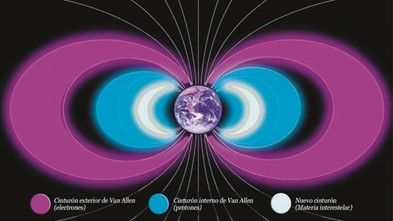
Terrestrial magnetism
Terrestrial magnetism is the presence of a magnetic field on Earth, creating a resemblance to a large magnet. The earth’s magnetic field is produced by the formation of the spiral where we find Ampère’s law that later originates an electric field, Faraday’s law. In 1600 a doctor, William Gilbert, while carrying out a study on magnetism, discovered that the origin of magnetism was to be found in the planet itself, in the terrestrial sphere, which has a behavior very similar to that of a magnet, creating the theory of terrestrial magnetism.
The similarity between terrestrial magnetism and the magnet was discovered by primitive compasses, which is why the poles are given the names of the north and south poles. The distribution of the poles is not fixed as the axis is in motion causing an alteration of the earth’s mass, which leads to variations in the location of the poles. In addition to the magnetic pole, there is the geographic pole, which, unlike the magnetic pole, is fixed. The angular difference between these poles is called declination.
The function of terrestrial magnetism
The presence of the earth’s magnetic field gives us the protection we need when we are exposed to radiation from outside the earth. This magnetic field acts as a barrier, filtering and retaining charged particles, this area of the atmosphere is called the Van Allen belt.
When particles come into contact with the earth’s magnetic field, they produce various natural phenomena, such as the northern lights.

How is the Earth’s magnetic field maintained?
The layer above the dense inner core is composed of liquid iron, which rotates and shakes, causing an electric current, resulting in the geodynamo, which is responsible for maintaining the magnetic field.
Characteristics of the Earth’s magnetic field
For the earth’s magnetic field to work properly we need the following properties:
Inclination = the magnetic field tends to tilt towards the magnetic north pole which rotates until it reaches the inclination of the magnetic equator.
Intensity= the intensity found at the poles ranges from 0.25 to 0.65 Gauss.
Bipolar = the magnetic field has two poles: the magnetic pole and the geographic pole, each of which has a north and a south pole.